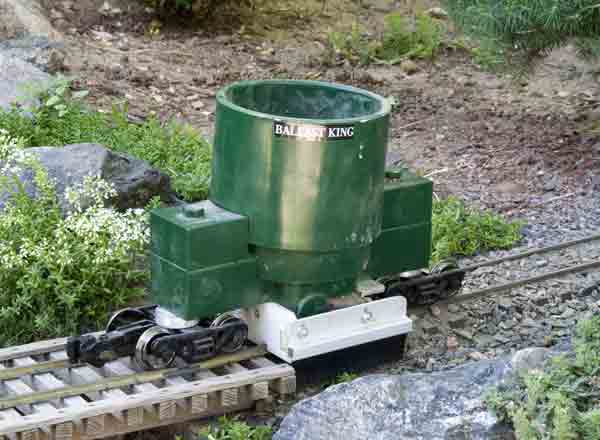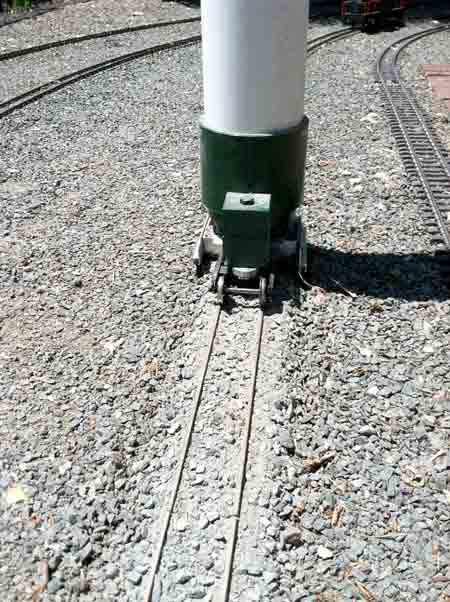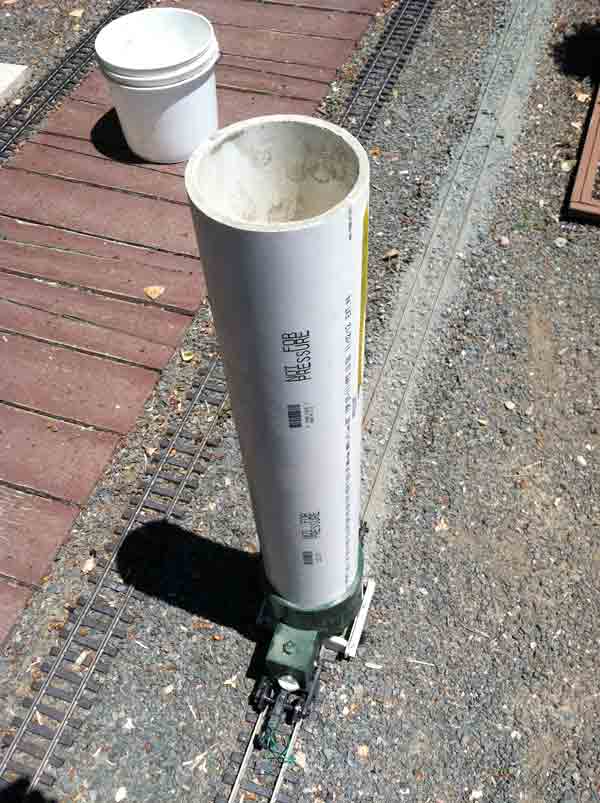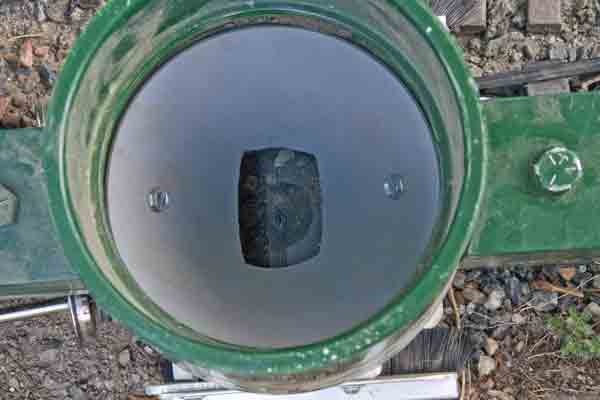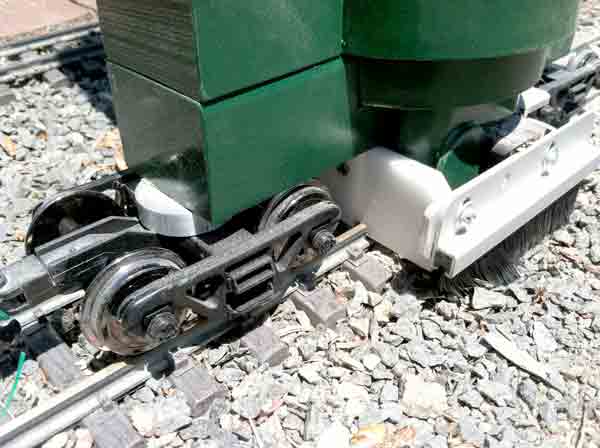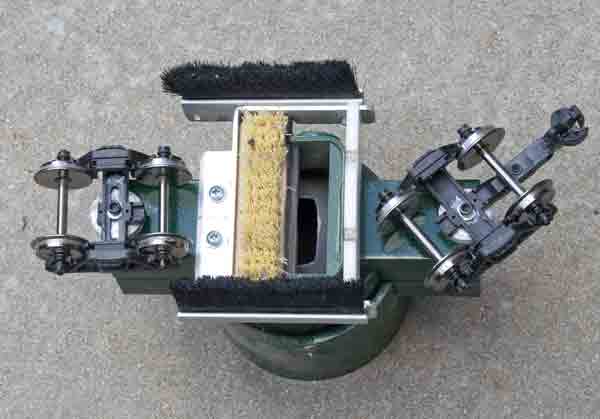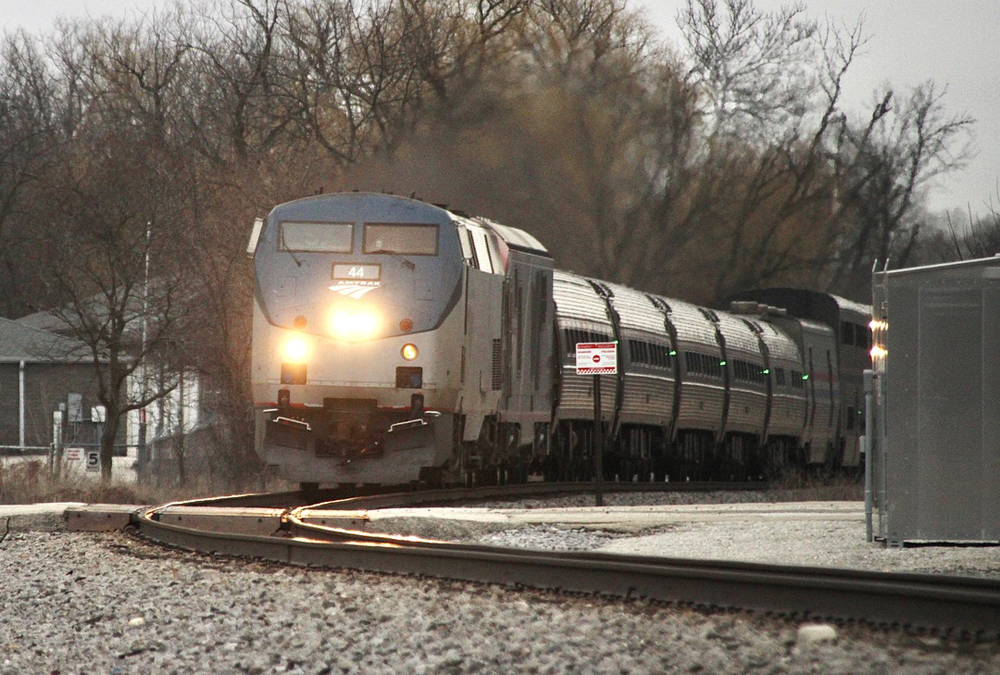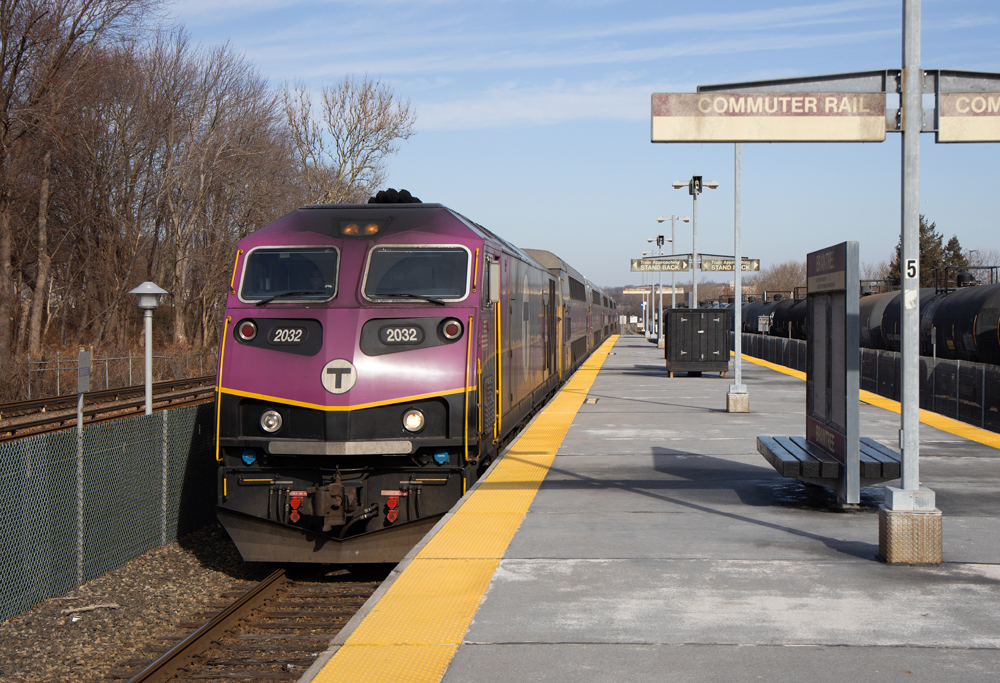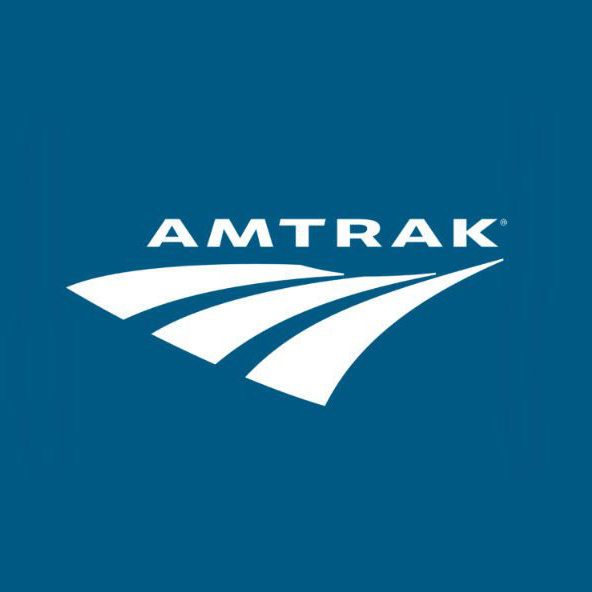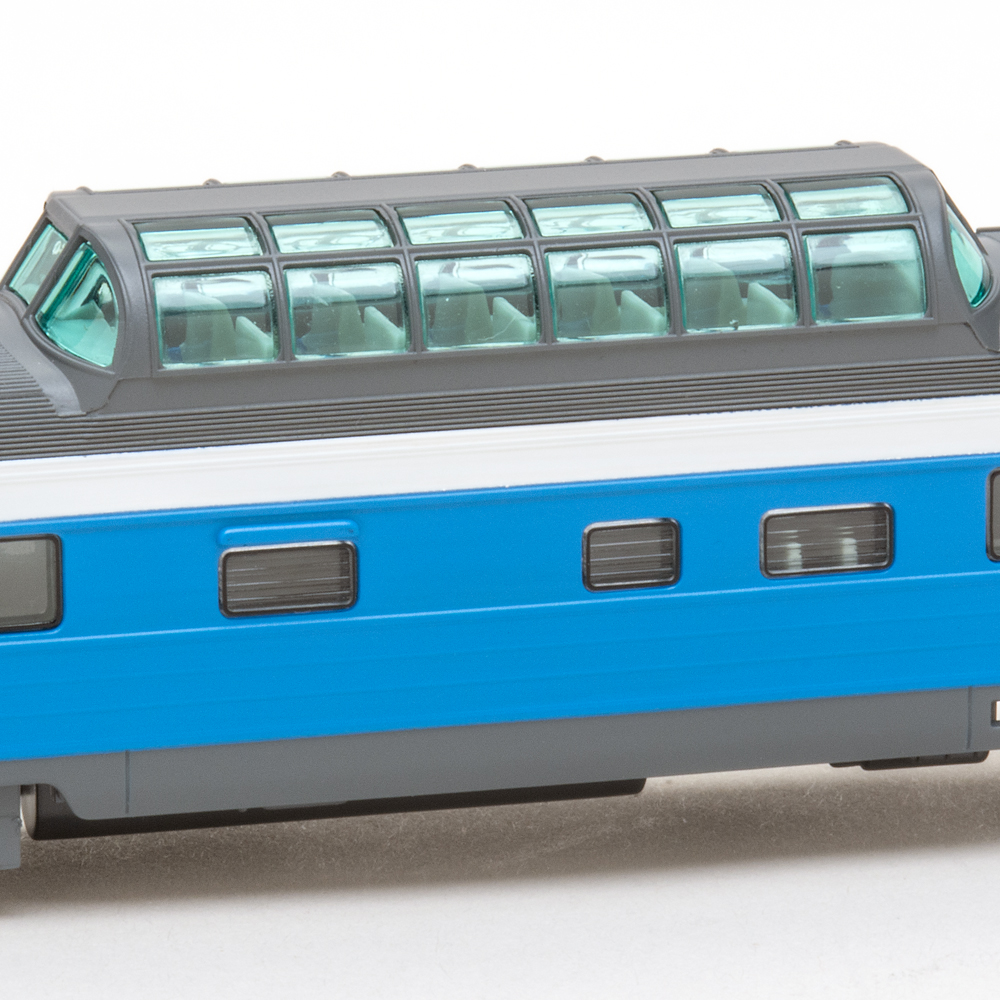Ballast King
12817 Briar Dr.
Leawood KS 66209
Price: $259 + $16.80 s&h
Website: www.ogaugeconnection.com
Steel and PVC hopper car for ballasting large-scale track; can be used indoors or out. Dimensions: length (excluding coupler), 11 ½”; width, 5 ½”; height (without extension tube), 7″
Pros: Car automatically provides neatly-dressed ballast over your track; sturdy construction; PVC extension tube (not included—user must supply) allows hopper to ballast longer distances without refilling
Cons: May not work on some railroads with lots of switches or close-in obstructions; loaded car may be too heavy for locomotive hauling
Ballast King’s ballast-spreader car makes it possible to ballast your track and have a little fun while you’re doing it. The company has been making ballast spreaders and track-maintenance cars for the smaller scales for a few years now. The product reviewed here is their first foray into large scale.
The primary component of the car is a PVC hopper that dumps ballast onto the rails as you roll the car over the track. But it doesn’t just “dump” the ballast; there are a flanger and brushes attached to the car to smooth and shape the ballast as it goes along. You can also add a length of 4″ diameter PVC pipe (user must supply) to the top of the hopper for greatly increased capacity so you don’t have to fill the hopper every two feet or so. The position of the brushes is adjustable, so you can dictate to some extent how the ballast is spread. The sample sent for review does not have a flow adjustment because the manufacturer felt that, with the crusher fines I use as ballast for my railroad, the flow adjustment wouldn’t be that effective. For those who use smaller ballast (chicken grit, road sand, etc.) the flow adjustment may be of benefit. Ballast King recommends that those who are interested in a spreader send them a sample of the ballast you’re planning to use, so they can customize the spreader for your ballast.
The spreader is well constructed of steel and PVC, with weights to keep the car on the track. There is a coupler on one end so you can pull the spreader with a locomotive. The flanger blade is made from a thick piece of plastic, so it won’t short out the rails. Note that, since the flanger blade does stick down between the rails, you must lift the car to go over switches, grade crossings, etc. Because of the way the flanger fits over the railhead, the rear truck slides from side to side under the car, so you probably wouldn’t want to try to pull anything else with this car. You’ll also need to check the width of the spreader against any bridges or rock cuts to make sure you’ve got ample clearance space.
My railroad doesn’t lend itself to using a ballast spreader like this one—I have too many switches and close-in groundcovers and other plants that would get in the way. I’d have to lift it off the track every 10 feet or so, or remove the PVC extension tube to get under a bridge or bush. So, to test the effectiveness of the car, I took it out to the Denver Garden Railway Society’s railway at the Colorado Railroad Museum. It has far fewer switches, and long runs of unobstructed track—the ideal environment for a spreader like this.
I put the spreader on the track and filled just the hopper (without the extension tube) with crusher fines. I started pulling the car along. The ballast poured out of the hopper and was neatly shaped along the track. It took some effort to pull the car because of the brushes spreading the ballast but the car itself rolled smoothly. One hopper full ballasted only about two feet of track. Next, I installed the plastic extension tube. A two-foot length of 4″-diameter PVC pipe is recommended (you must supply this). You could probably use whatever length you feel you need, though if the pipe was much longer you’d have stability issues, especially when the tube is full of heavy ballast.
While the car is equipped with a coupler for locomotive hauling, there are a few (literal) hitches. The big culprit is the plastic flanger blade that sits over the rails. It tends to snag every now and then, either on a loose piece of ballast, a rail joint, or other obstruction, and must be wiggled to free it. Second, the weight of the car itself is excessive, especially if you’ve got a full ballast-tube extender of any length on it. Also, the brush that shapes the ballast can create drag when working, depending on how far down it’s extended. So, while the coupler is there for locomotive pulling, know that you’re going to need a strong one (or two, or three) to do so. I brought only one engine with me to the museum, which spent more time spinning its wheels than moving the ballast hopper.
However, I found it easy to just push the car along the track by the extension tube so, to be honest, I didn’t miss the locomotive aspect of the project. I could push and wiggle as needed, while guiding the car down the track. Each tube ballasted about 12′ of track. The resulting ballast was neatly groomed, even, and brushed far enough below the railhead to not pose any worry to flanges. In one pass, the spreader made quick work of a time consuming, three-step process, if done manually. The only extra step is to wipe the remaining layer of fine dust off the top of the rails if you’re running track power. With battery power or live steam, a pass or two with a train will knock it off.
All in all, the car works well, provided it’s used in an environment conducive to its operation. If your railroad is more open than mine, this ballast spreader provides an easy way to apply a nicely-groomed layer of ballast to the track fairly quickly. Whether it’s annual spring maintenance or a quick dressing-up prior to an open house, nothing makes the railroad look better than a fresh layer of ballast.





